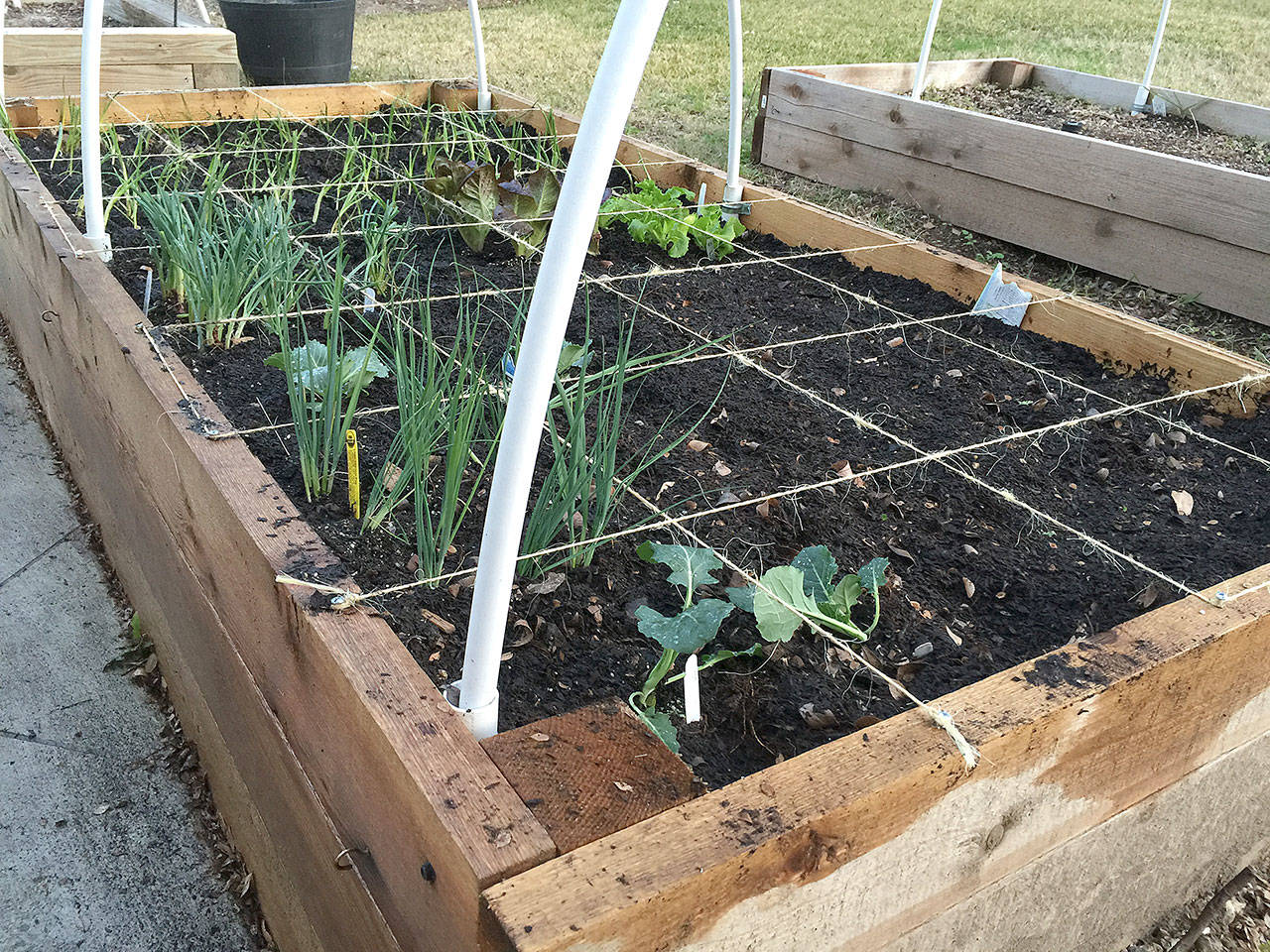By Mary Shane
WSU Master Gardener
Let’s plant some vegetables!
Before you set out plants or seeds, there are some tips I’ve learned through WSU’s Master Gardener training for you to get a good start. This will be the first of several articles to give beginners an idea about growing vegetables on the Harbor.
The first step after you have decided to plant a vegetable garden is to determine where. Find a spot in your yard that is sunny between eight and 12 hours a day. Placing it near a door or porch will make it easier to spend a few idle moments pulling weeds or harvesting some of the vegetables you have grown.
Try to avoid frost pockets — spots at the bottom of a hill or where the soil is very slow to warm. Stay away from shrubs and trees, because they will block the sun; and try to avoid windy spots.
When considering the size of your garden, start small. It will be easier to enlarge the space than it would be to make it smaller and have to reseed parts of your lawn.
Tools you will need for this venture are most likely those you already have on hand: a garden rake, a shovel, a hoe, garden gloves and easy access to water. A cart or wheelbarrow is very handy, along with a soil thermometer.
Once you have a general idea for the garden’s location and size, you will need to think about the layout.
A garden with long, single rows dates to the days of using horses or mules to till the garden. Carrots and onions do well in this format, with plants placed single-file and walking space left between rows.
Most other vegetables are easily accommodated in a wide row, where several plants are clustered down a wider swath. This more intensive planting provides shade for vegetables and shades the ground as well, restricting the growth of weeds and conserving moisture.
Mark off rows using the head of a garden rake, which is usually 10 to 12 inches wide. Thinly broadcast seeds in the row so they have 1 to 2 inches of space between each. Cover the seed or lightly rake it into the soil. When the seedlings emerge, thin them so they are the recommended distance apart.
Another method is creating raised beds — an area enclosed in wood, or just mounded soil. The yield per square foot from raised beds is often twice the yield from single-row gardening. These beds should be about 6 inches tall and just wide enough to reach across. Allow for 18- to 24-inch-wide pathways.
Though raised beds may need to have soil added every year because of runoff, they do provide additional heat for the planting area.
Another choice is “square foot gardening,” which is pretty much as its name suggests. A 4-foot-wide raised bed is segmented into 1-foot-square planting areas. Plant a different vegetable crop in each square-foot segment, following recommended spacing based on the mature size of the plant.
Check the seed packet for distance instructions and plant the number of seeds called for. If the recommended spacing between plants is 12 inches, then you plant one per square foot, and so on:6-inch spacing = 4 plants per square foot
4-inch spacing = 9 plants per square foot
3-inch spacing = 16 plants per square foot
We’ll continue later with more tips for a successful vegetable garden, including a focus on container gardening. And we will talk about choosing vegetable seeds for a productive garden on the Harbor.
Mary Shane finished WSU Master Gardener training in 1998. She gardens on a third of an acre overlooking the Sylvia Creek Valley.


